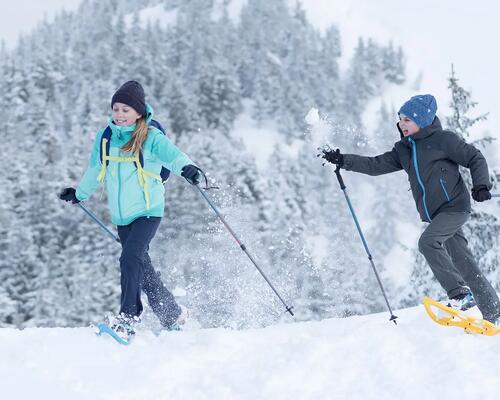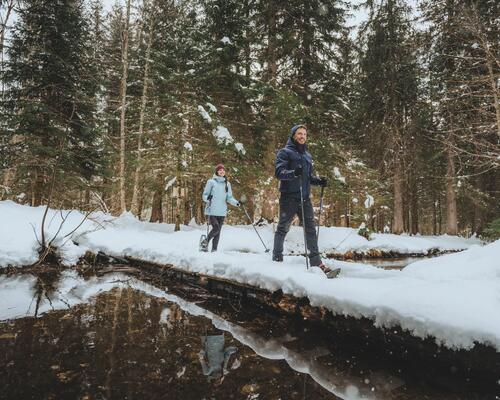Hiking on snow in easy mode
You walk at an easy pace… in your opinion, hiking is the ideal time for the contemplating nature, getting a breath of fresh air, stopping to take photos, making snow angels with the children… you enjoy the signposted trails and the silence of the snow-covered landscapes…




















